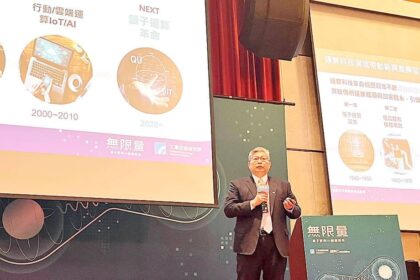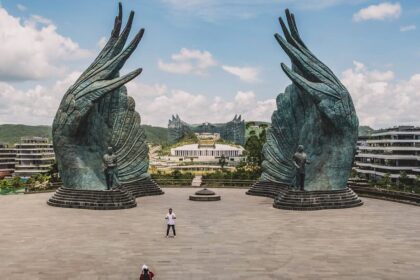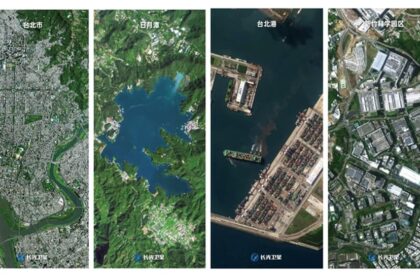China’s Economic Recovery in 2025: Signs of Progress and Persistent Challenges
China’s economy in 2025 is demonstrating a complex but generally positive trajectory, marked by robust industrial output, cautious improvements in consumer spending, and a series of government policies aimed at sustaining growth. As the world’s second-largest economy, China’s performance has significant implications for global markets, supply chains, and economic stability. However, the recovery remains uneven, with persistent challenges such as a prolonged property sector slump, global trade tensions, and fragile consumer confidence.
- China’s Economic Recovery in 2025: Signs of Progress and Persistent Challenges
- Industrial Output: The Engine of Recovery
- Consumer Spending: Gradual Recovery Amid Caution
- The Property Sector: A Lingering Drag on Growth
- Policy Measures: Stimulus and Structural Reforms
- External Risks: Trade Tensions and Global Uncertainty
- Market Reactions and Investor Sentiment
- Looking Ahead: Prospects for Sustained Recovery
- In Summary
Industrial Output: The Engine of Recovery
Industrial production has been a consistent bright spot for China’s economy in 2025. According to data from the National Bureau of Statistics (NBS), industrial output expanded by 6.1% year-on-year in April, surpassing analyst expectations and underscoring the resilience of China’s manufacturing sector. This growth, while slightly slower than the previous month, reflects the country’s ongoing investment in high-tech industries, energy, and infrastructure.
High-tech manufacturing, in particular, has seen impressive gains. The value-added output of this sector rose 9.1% year-on-year in the first two months of 2025, outpacing overall industrial growth. New energy industries, such as electric vehicles and renewable energy, have also contributed significantly, with new energy vehicle production soaring by 47.7% and large-scale wind and solar power generation increasing by 10.4% and 27.4%, respectively.
Technological innovation is playing a pivotal role. Breakthroughs in artificial intelligence (AI) and digital product manufacturing have driven demand for smart products and computing power, further boosting industrial output. The output of service and industrial robots registered year-on-year increases of 35.7% and 27%, respectively, highlighting the sector’s dynamism.
Despite these strengths, external headwinds remain. The ongoing trade tensions with the United States, particularly the imposition of new tariffs, have created uncertainty for exporters. While exports to Southeast Asia and Europe have partially offset declines to the US, analysts warn that the full impact of tariffs may become more pronounced in the coming months, potentially weighing on industrial momentum.
Consumer Spending: Gradual Recovery Amid Caution
Consumer spending, a critical pillar of China’s economic growth, has shown signs of improvement but remains fragile. Retail sales, a key indicator of consumption, grew by 5.1% year-on-year in April, according to official data. This figure, while positive, fell short of economists’ projections and marked a slowdown from the previous month. The uneven recovery in consumption reflects lingering concerns about unemployment, wage growth, and the broader economic outlook.
Government policies have played a central role in supporting consumer demand. Initiatives such as the expanded consumer goods trade-in program, which subsidizes purchases of home appliances, electronics, and vehicles, have stimulated short-term spending. Sales of communication equipment, furniture, and household appliances posted double-digit growth in the first two months of the year, driven by these incentives.
Holiday spending, particularly during the Lunar New Year, provided a temporary boost to retail sales. The box office, for example, saw record takings, and catering revenue rose by 4.3% year-on-year during the holiday period. However, the effect of these seasonal factors and subsidies may fade over time, raising questions about the sustainability of the recovery in household consumption.
To address weak consumer confidence, the government has unveiled a pro-consumption plan that includes measures to promote wage growth, establish childcare subsidies, and enforce paid annual leave. These efforts aim to increase residents’ disposable income and willingness to spend, but structural challenges such as high household debt and slow wage growth, especially in rural and lower-income urban areas, continue to temper progress.
The Property Sector: A Lingering Drag on Growth
China’s property market remains a significant source of economic vulnerability. Investment in real estate fell by 9.8% year-on-year in the first two months of 2025, deepening the contraction seen in 2024. New home prices have shown only tentative signs of recovery, with modest month-on-month increases offset by high inventory levels and buyer uncertainty, particularly in smaller cities.
The property sector’s struggles have far-reaching implications, affecting construction, building materials, home appliances, and overall consumer sentiment. The government has responded with measures such as relaxed lending policies and financial aid to developers, but the sector’s structural weaknesses persist. Stabilizing the real estate market is seen as crucial for supporting broader economic recovery and preventing negative spillovers into other industries.
Unemployment, closely linked to the health of the property and manufacturing sectors, has fluctuated in recent months. The urban jobless rate stood at 5.2% in July, up from 5% in June, partly due to seasonal factors such as the graduation season. Nonetheless, the overall trend since late 2023 has been a gradual decline in unemployment, providing some support for consumer confidence and housing demand.
Policy Measures: Stimulus and Structural Reforms
China’s economic recovery in 2025 has been underpinned by a series of targeted policy measures. The government has prioritized expanding domestic demand, with a particular focus on boosting consumption and supporting small businesses. Key initiatives include:
- Consumer Goods Trade-In Program: Subsidies for purchasing new appliances, vehicles, and electronics have driven short-term sales and supported manufacturing.
- Fiscal Stimulus: The issuance of ultra-long special treasury bonds has financed infrastructure projects and equipment upgrades, bolstering investment and industrial output.
- Pro-Consumption Plan: Policies to raise incomes, provide childcare subsidies, and enforce paid leave aim to strengthen household spending power.
- Support for Innovation: Investments in high-tech industries, AI, and renewable energy are intended to modernize the industrial system and create new growth drivers.
These measures have contributed to a more balanced growth model, with both supply-side (industrial output) and demand-side (consumption) factors playing important roles. However, policymakers face a delicate balancing act. The need to sustain growth must be weighed against rising public debt, deflationary pressures, and the risk of asset bubbles, particularly in the property sector.
External Risks: Trade Tensions and Global Uncertainty
China’s economic outlook is clouded by significant external risks. The escalation of trade tensions with the United States, including the imposition of new tariffs, poses a direct threat to export-driven growth. While China has managed to redirect some exports to other markets, the potential for further trade barriers and geopolitical frictions remains high.
Global economic uncertainty, including slower growth in major trading partners and volatile financial markets, adds to the challenges. The Organization for Economic Cooperation and Development (OECD) recently revised its 2025 global GDP growth forecast downward but raised its projection for China to 4.8%, reflecting cautious optimism about the country’s ability to navigate these headwinds.
Analysts warn that the full impact of tariffs and external shocks may not be fully reflected in current data. The front-loading of shipments by exporters to beat tariff deadlines has temporarily supported industrial output, but this effect is expected to wane. Policymakers are likely to maintain a flexible approach, with the possibility of further monetary easing and fiscal stimulus if conditions deteriorate.
Market Reactions and Investor Sentiment
Financial markets have responded cautiously to China’s economic data. While strong industrial output and retail sales have provided some reassurance, concerns about the property sector, unemployment, and external risks have tempered investor enthusiasm. Chinese stock indices have experienced volatility, reflecting the mixed signals from economic indicators and policy announcements.
Notably, the tech sector has seen significant gains, driven by optimism about the growth potential of AI and high-tech manufacturing. The Hang Seng Tech Index and the MSCI China Index surged by 27% and 19%, respectively, from late January to late February, buoyed by the success of leading Chinese tech companies and startups.
However, credit rating agencies have expressed caution. Fitch recently downgraded China’s credit rating, citing rising public debt and fiscal risks. This underscores the challenges facing policymakers as they seek to balance stimulus measures with long-term financial stability.
Looking Ahead: Prospects for Sustained Recovery
The outlook for China’s economy in 2025 is one of cautious optimism. Most analysts expect growth to continue, albeit at a slower and more uneven pace than in previous years. The government’s official growth target of around 5% is seen as ambitious, with private forecasts ranging from 4% to 4.8% depending on the trajectory of global trade and domestic policy responses.
Key factors that will shape the recovery include:
- Effectiveness of Policy Support: The ability of fiscal and monetary measures to stimulate demand and investment without exacerbating debt risks.
- Stabilization of the Property Sector: Success in addressing structural weaknesses and restoring confidence among buyers and developers.
- Resilience to External Shocks: The capacity to adapt to changing global trade dynamics and mitigate the impact of tariffs and geopolitical tensions.
- Innovation and Industrial Upgrading: Continued investment in high-tech industries, renewable energy, and digital transformation to drive long-term growth.
As China navigates these challenges, the balance between industrial strength and consumer demand will be critical. The government’s shift toward a more consumption-driven growth model reflects an understanding that sustainable recovery depends not only on manufacturing prowess but also on the confidence and spending power of its citizens.
In Summary
- China’s economy in 2025 is showing steady recovery, led by strong industrial output and cautious improvements in consumer spending.
- Government policies, including subsidies, fiscal stimulus, and support for innovation, have played a key role in sustaining growth.
- The property sector remains a significant drag, with ongoing declines in investment and only tentative signs of stabilization.
- External risks, particularly trade tensions with the US and global economic uncertainty, continue to pose challenges.
- Analysts expect growth to continue, but at a slower and more uneven pace, with further policy support likely if conditions worsen.
- The shift toward a more balanced, consumption-driven growth model is central to China’s long-term economic strategy.












